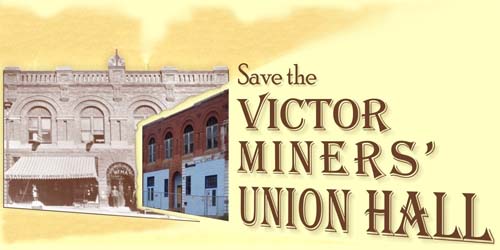 |
Victor
|
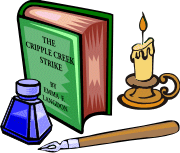
The
Cripple Creek
Strike:
a History of
Industrial Wars
in Colorado,
1903-4-5
By Emma Florence Langdon
pages 24 to 33
STRATTON'S INDEPENDENCE.
Just a word about the discoverer of the great Independence mine and then I will tell you something of the mine itself.
The late W. S. Stratton, who passed away in 1902, came to Colorado in the summer of 1872, and was considered a poor man. He was possessed of an ambition to become a lawyer, and this one thing more than any other induced him to come to Colorado, where he hoped to make quickly enough money at mining to study law. His father could not afford to give him a college education, but when the youth decided to start out to seek his fortune his father gave him $500. Young Stratton had been apprenticed to a carpenter and was well equipped for making his way with the capital he possessed. He came to Colorado Springs in 1872 and soon after his arrival he went out and dug in the hills, not far from the city.
Thus he early began the years of prospecting and study of the formations of the rocks which finally resulted, in 1891, at Victor, Cripple Creek district, so successfully. He spent the days working at his trade and at night studied the intricacies of mining. He devoted nineteen years to the toil of prospecting in the hills from one range to another, persevering with almost superhuman endurance. On July 4, 1891, Mr. Stratton located two mining claims, and in honor of the day he named one the Independence and the other Washington.
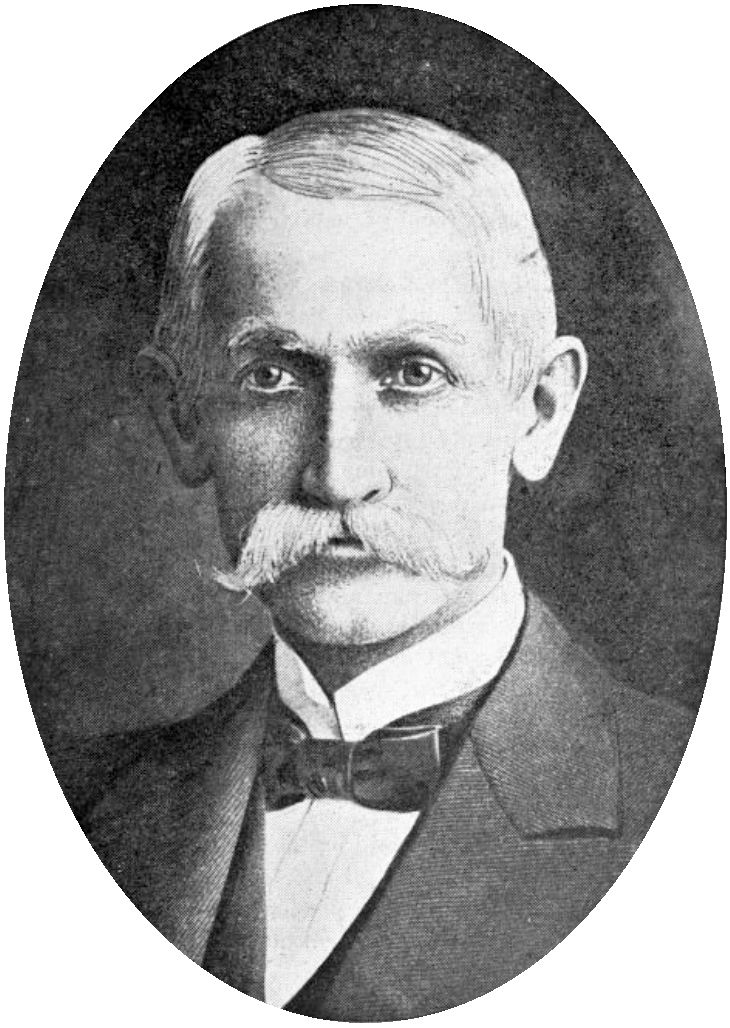
W. S. STRATTON
The late Winfeld Scott Stratton was a quiet, taciturn, self-contained man of the simplest manners. He vied with Diogenes in the ability to reduce his wants as the occasion of health and fortune required. His manner was plain, straightforward and unaffected. He was a man whom success and riches did not alter, either in modes of life or disposition. In his days of prosperity he never forgot any of his friends of his toiling, suffering days, and remembered them substantially. It was truly said of him that he was absolutely void of vanity, perhaps the rarest trait known to human kind.
Mr. Stratton came to Colorado in 1872 a poor youth with $500 and a prospector's pick and passed away in 1902 a multimillionaire.
Stratton's Independence is known everywhere. It has proved to be a phenomenal mine in a phenomenal camp. Some time ago it was generally reported as played out. The real fact of the situation was that the mine was ''gouged'' in order to pay enormous monthly dividends, without a proportionate amount of development work. Recent developments are gratifying to a high degree.
Stratton, early in the camp's history, made the assertion that any patented claim within the mineral belt was worth $25,000. He backed that statement by purchasing over $4,000,000 worth of unproducing inside territory at an average value of over $40,000 per claim. With development, it appears as if a mine can be opened up anywhere.
The daily output of the mine under normal conditions is 260 tons of ore.
This property was purchased by the Venture Corporation and Stratton's Limited of London for the enormous sum of $10,000,000 and because of its failure to produce that amount to date it has been involved in numerous litigations and controversies.
The old bonanza has had a stormy career since it passed into English ownership. It has been made the subject of stock manipulation on a scale which has seriously hurt the industry of Colorado 's foremost camp; it has been experted [sic] and denounced frequently, in a manner which appeared ridiculous to onlookers and despite the frequent assertions that it had "played out," the old mine is still doing business and is a good producer.
THE PORTLAND.
In January, 1892, the first stake was set, claiming the Portland claim. The locator had no idea then that the day would soon come when all the surrounding property would be owned, and the claim would be a part of the most gigantic mining corporation in the state of Colorado, if not in the United States.
The original location of the Portland company, which was the Portland claim, consisted of one-tenth of an acre and the Bobtail No. 2, the total of the two being less than three acres of ground.
After the location of the property, James F. Burns, John Harnan and James Doyle commenced operations on it, and in January of 1893, they made their first shipment of ore, which consisted of thirty-two sacks, to Pueblo. For this ore they received $640.00 a ton in gold. The first ore was obtained while sinking the shaft from the surface to the depth of thirty-five feet.
Just a year after the first shipment was made, the owners gave an option on the property to T. J. Condon and Walter F. Crosby, who, a month later, in February, 1894, organized the Portland company. It was capitalized for $3,000,000 divided into 3,000,000 shares of a par value of $1.00 each. The purchase price of the property was $250,000.00. The sum of $15,000.00 was made as the first payment, which meant $5,000.00 to each of the owners. They failed to meet the second payment when it became due, however, and then Messrs. Burns, Harnan and Doyle took charge of the company. A special meeting was called, at which the resignations of the old officers and board of directors were accepted and new officers elected, James F. Burns being elected president and treasurer; the late W. S. Stratton, vice-president and F. J. Peck secretary.
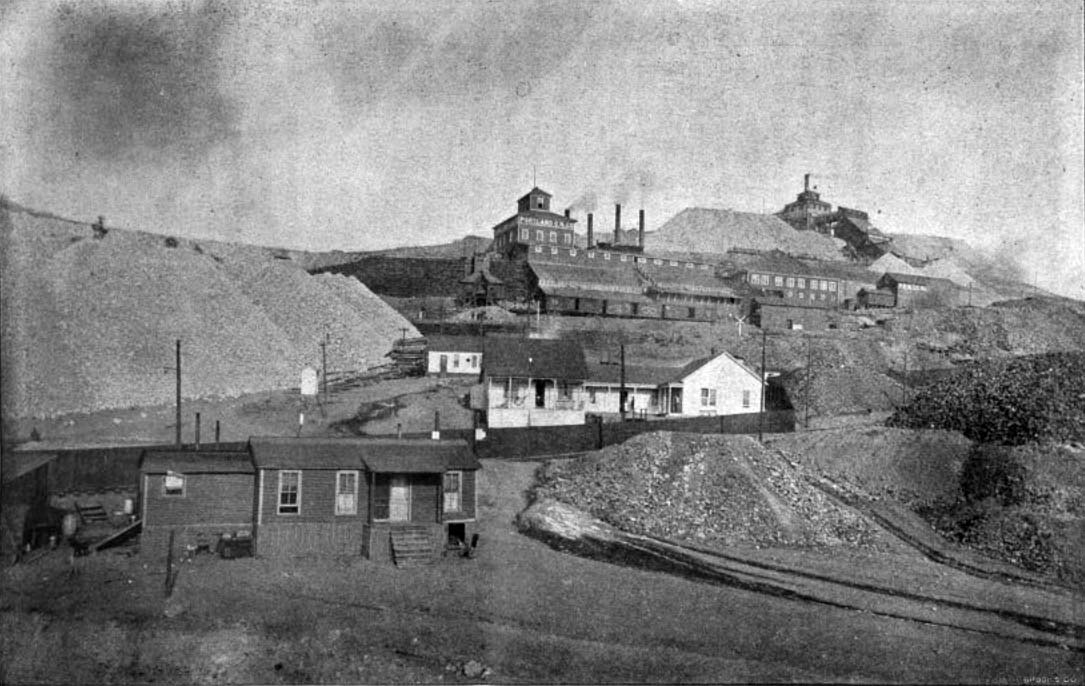
THE GREAT PORTLAND MINE
The Portland has had litigation after litigation to contend with. But in a very short time after the company was organized, they paid out, besides the amount expended in litigation, acquiring more property, the sum of $2,000,000. All of which they took from the ground during the course of development.
The Portland, as time went on, bought property after property and at the end of five years from the time the first stake of the original claim of less than three acres was staked as the Portland, the company owned close to two hundred acres of rich territory. Every penny paid for the additional property being realized from the sale of ore taken out of the ground; not to mention the fortunes that had to be spent during the first five years in litigation. The Portland company has the distinction of never having sold one share of treasury stock for the purpose of acquiring money for development. From the first time that ore was encountered they commenced to mine, and as development proceeded, more ore was opened, and the prospects of the mine looked better every day.
The Portland of today stands the best developed mine in the state. Above the 1,100-foot level there are twenty-five miles of workings, which have exposed fifty ore-bearing veins.
This company has the finest equipment in the state. Three shafts furnish the exit for the great tonnage of ore. The Portland up to Jan. 1, 1903, had paid the enormous sum of $4,297,080.00 in dividends to the stockholders, and the Mining Reporter of Oct. 15, 1903, reported a three cent dividend, making a total of $4,500,000 that has been declared by the company within ten years on a capitalization of $3,000,000.
At the beginning of this year, 1903, the Portland company had hoisted 400,000 tons of ore, that had yielded in gold the sum of $17,000,000.00. In ten years there has been produced $17,000,000.00 worth of gold-bearing ore.
The mill owned by the Portland, located at Colorado City, Colo., for the treatment of the company's ore, is one of the finest, best appointed and most scientifically constructed chlorination plants in the world. The cost of this institution, which is the consummation of technical skill and energy, was much more than $500,000.
The actual management and development of the great bonanza has always been in the charge of James F. Burns.
Among the distinguished traits of Mr. Burns' character, not the least predominant and praiseworthy, is his philanthropy.
Not of the sentimental sort is the liberality of the great mine owner. Not an instant will he tolerate imposition. He demands of his employes both skillful and conscientious work, and rewards that work in the measure of its merit. Opportunity is the tool of genius and the career of James F. Burns has been its demonstration. Many, perhaps, feel that, had the opportunity been presented to them, they too could have improved it to as good advantage as Mr. Burns. Possibly they could, had they his genius; but their number is not many.
Mr. James F. Burns is looked upon as a hero in the Cripple Creek district, especially by the unions, on account of the stand taken by him in all labor troubles that have as yet confronted the miners of the district. Of his attitude toward organized labor, I will deal more fully in the "strike of 1903."
The Cripple Creek district is dotted everywhere with other mines of more or less note, but I cannot undertake the task of describing all the mines in the district. My book's mission is to relate the labor troubles of the camp, and the mines given in detail, were only intended to give the outside public some idea of one of the greatest gold camps in the world—the Cripple Creek district, Teller county, Colorado.
Following are a few of the richest mines that have not been mentioned, located in the district: Gold Sovereign, Modoc, Isabella, Independence T. & M. Co., Golden Cycle, Gold King, Mary McKinney, Finley, Theresa, Anaconda, Mary Cashen and many others.
The Cripple Creek district is a $3.00-a-day camp. That is, no one receives less than $3.00 a day for eight hours work. Many receive more, making the average wage per day paid for labor amount to $3.44.
The pay roll for the entire district each month, under normal conditions, amounts to $652,189.41. This does not include the salaries of the managers and superintendents, their salaries amounting to many thousand dollars each month. The total number of men employed in mines in the district January 1, 1903, was about 6,270. This number included coal haulers, ore haulers, power plants, mills, sampling works, timber haulers, assayers and helpers, mining supply men, lumber supply men, etc.
The employes of the camp believe in patronizing home industry, and for that reason very little of the $652,189.41 paid each month to them goes beyond the limits of the district. With such conditions existing, it is readily seen that the merchants enjoy a good trade.
In the latest mining report of the United States the Cripple Creek district takes the lead of any camp in the United States.
VICTOR, THE CITY OF MINES.
(The following applies to the entire district as well as Victor.)
Where the massive granite boulders rear their heads to sun-kissed heights.
Where the eager mountain tourists view nature's grandest sights.
Where the summer's sun and winter's snow mingle the whole year round,
Where the gold in nature's treasure vaults, by the delving miners found,
There is the city of Victor, the city of the mines.
Where progress is our motto and prosperity our lot,
Where our spirits never daunted are, and failure we know not,
Where the people of all nations are as one in enterprise,
Where as evidence of industry, lowering smokestacks pierce the skies,
There is the city of Victor, the city of the mines.
Where a host of sturdy miners wrench the gold from nature's grasp,
Where the hand of any stranger always meets with friendly clasp,
Where the people work together, all as one in firm accord,
Where the laborer for his labor gets his full and just reward,
There is the city of Victor, the city of the mines.
Where the bells of Sabbath morning call the faithful to the fold,
Where the charity of the people shield the helpless from the cold,
Where the young and old together, the Almighty's praises sing,
Where with song and music always, mountain crags and canons ring,
There is the city of Victor, the city of the mines.
Where we do not curse the country every time a thing goes wrong,
Where we do not get discouraged, to that class we don't belong.
Where in future we will prosper as we've prospered in the past,
Where a strike our heads don't worry, for it will not always last,
There is the city of Victor, the city of the mines.
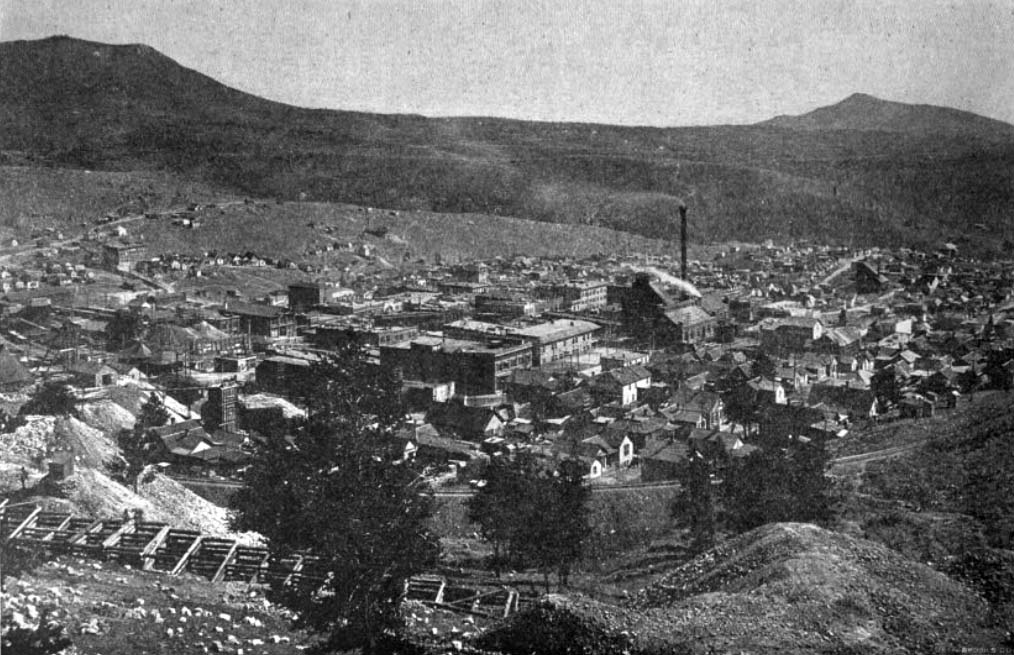
CITY OF VICTOR—The smokestack in the center shows location of the famous Gold Coin mine.